News Articles
MedEsthetics, APRIL 2014
Physicians compare the merits of Botox Cosmetic, Dysport and Xeomin, as a new wave of toxins vies for approval.
IS THREE THE MAGIC NUMBER
In addition to a growing number of neurotoxin options, Botox Cosmetic recently received FDA approval for the treatment of crow’s feet, and physicians are seeing continued growth in the numbers of women and men seeking these cosmetic treatments.
“We have enjoyed double digit growth year after year since we started 12 or so years ago, and we saw the largest growth ever in the last year,” says Vic Narurkar, MD, founder of San Francisco’s Bay Area Laser Institute. “Having multiple products has raised awareness and that has helped grow the market. We have used Botox for crow’s feet for years, but media attention generated by FDA approval of this cosmetic use did bring in more patients for that service. We now see as many patients for crow’s feet as for glabellar lines.”
How do these toxins differ and what advantages, if any, do the newer products provide physicians and consumers? We asked a panel of experts, who have used all three products-Xeomin, Botox and Dysport-to share their experiences.
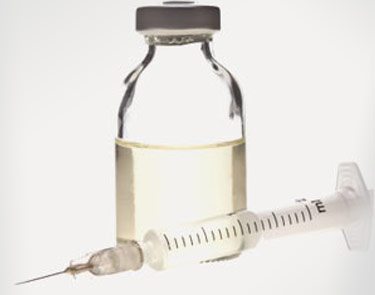
“Botox is still the gold standard, best studied and most widely used. It is also the most costly, and the prices keep rising.” .
Brand Distinction
Dysport, abobotulinumtoxinA, gained FDA approval in April 2009 for temporary improvement in the appearance of glabellar lines, and the newest neurotoxin, Xeomin, incobotulinumtoxinA, was approved in July 2011, also for temporary improvement in the appearance of glabellar lines.
“The three FDA-approved botulinum toxins are more similar than different,” says Joel L. Cohen, MD, director of AboutSkin Dermatology and DermSurgery, Englewood and Lone Tree, Colorado and associate clinical professor at the University of Colorado. “They share the same mechanism of action; they are all type A botulinum toxins; and they have the same type of heavy chain receptor. One major difference is in dosing between Dysport and the other two. All three have proven to be safe and effective when used appropriately in many studies worldwide for cosmetic use.”
While the products have more similarities than differences, practitioners are identifying some unique characteristics, says Gilly Munavalli, MD, medical director and founder of Dermatology, Laser & Vein Specialists of the Carolinas. “The speed of onset of the products is different, with Dysport and Xeomin kicking in much quicker than Botox,” says Dr. Munavalli. “This may be important depending on the patient’s schedule. Some anecdotal reports suggest that the effects of Xeomin may last slightly less long than those of Botox in a 1:1 unit comparison, but in my experience they have shown about the same duration of effect in my patients. By and large, the duration of effect is the same for all three products. ”
Botox is still the gold standard, best studied and most widely used,” he continues. “It is also the most costly, and the prices keep rising every year. The 3% increase in 2014 is less than in past years, probably due to the presence of competitors. Dysport and Xeomin are still trying to gain market share so they tend to be 10% to 20% cheaper to the physician.”
Comparing prices can be difficult because of basic differences in the products. While the potency (biological activity per unit) is the same for Botox and Xeomin, it is quite different for Dysport, and there is no standard dose conversion. The amount used in FDA clinical trials was 2.5:1 when compared with Botox, but it can be used at 3:1 or higher.
The dosage differential can also make it difficult to compare Dysport with Botox and Xeomin in clinical trials. Some studies of Dysport in Europe have shown greater duration of effect when compared to Botox. Most studies in the U.S. find a similar duration of effect. Dysport claims to also include an increased diffusion ratio and a “softer” effect than Botox. This would make it a better choice for larger areas, such as the upper forehead, but increased diffusion would be a disadvantage in areas like the glabella, where a more targeted effect is desired. “In an ideal world,” says Dr. Munavalli, “I would use Dysport for the forehead and crow’s feet because of its wider range of diffusion into the bigger frontalis and orbicularis muscles. Botox would be my choice for more specific areas that require greater finesse like the glabella and lower face.”
Xeomin marketing materials offer two distinctions: It doesn’t require refrigeration, which makes it more portable, and there is less risk of allergies than with Botox. The latter claim is based on the fact that while Botox contains hemagglutinin and non-hemagglutinin proteins as well as toxin, Xeomin is free of these complexing proteins. Scientists speculate that these proteins could increase the possibility of allergic reactions, but the claim is largely nullified, because after extensive use over more than 12 years, the incidence of allergic reaction after Botox injections is insignificant.
“In my experience, Xeomin tends to burn less with injection, and fewer patients complain of ‘heaviness’ after treatment,” says Dr. Munavalli.
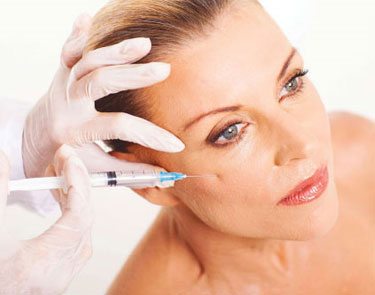
All three currently approved neurotoxin products are Type A botulinum toxins. Significant differences relate to dosing and reconstitution.
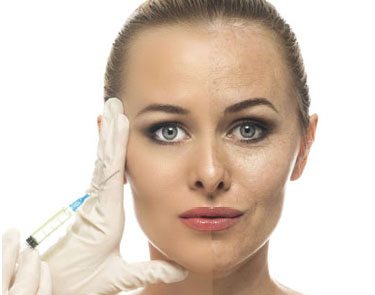
Although it has been used off-label for crow’s feet for years, the FDA approval of Botox Cosmetic for this indication is driving new patients to aesthetic practices.
What Studies Say
The only published study comparing all three formulations appeared in the February 2012 issue of the Journal of Drugs and Dermatology by Oliveira de Morais, et al. This small study of 12 male patients with moderate or severe hyperdynamic forehead lines randomly assigned subjects to receive either Botox Cosmetic, Dysport, Xeomin or Prosigne (a botulinum toxin type A product used in China). Evaluations were performed monthly for 150 days. Researchers concluded there were no statistically significant differences in the four preparations in terms of effectiveness over the three-month study period.
Botox Cosmetic and Dysport have been compared in various ways since 2008 when Arnold W. Klein, et al, published “Comparisons among Botulinum Toxins: An Evidence-Based Review” in the June 2008 issue of Plastic and Reconstructive Surgery before Dysport was approved for use in the U.S. The review of studies up to that point concluded that both Botox Cosmetic and Dysport are effective and safe in treating the upper face but suggested that additional studies on Dysport were needed to “establish optimal procedures and treatment recommendations.”
In September 2010, Cory Maas, MD, presented a study comparing Botox Cosmetic and Dysport for the treatment of crow’s feet at the American Academy of Facial Plastic and Reconstructive Surgery annual meeting (later published in the November/December 2011 Archives of Facial Plastic Surgery). The randomized, double-blind, split-face study of 90 subjects led the researchers to conclude that Dysport offers a quantifiable and demonstrable advantage in wrinkle effacement and hyperfunctional frown lines. Both Allergan and Medicis Aesthetics were approached and offered the opportunity to provide research grants for the study. Medicis did; Allergan declined.
Mark G. Rubin, MD, presented his clinical perspective on the differences between Botox Cosmetic and Dysport in the January 2013 issue of Practical Dermatology, concluding that the preparations were so similar that the choice is likely to come down to patient preference and the physician’s own comfort zone in injecting one or the other.
The most recent comparison of Botox Cosmetic and Dysport appears in the December 2013 issue of Dermatology and Therapy, an international open-access, peer-reviewed rapid publication journal. Ramtin Kassir and two colleagues conducted a triple-blind, prospective, split-face study comparing the two preparations for the treatment of facial rhytids in 85 subjects. It was funded entirely by Dr. Kassir’s practice, Mona Lisa Cosmetic Surgery Center in Wayne, New Jersey. Dr. Kassir is a national trainer for Medicis; the other two authors have no disclosures.
Results showed that for a higher percentage of participants, effects of Dysport appeared sooner and lasted longer: 83% injected with Dysport had continuing effects after three months compared to 48% injected with Botox; 65% showed continuing effects with Dysport after four months compared to 47% with Botox. Participants received 10 units of Botox Cosmetic on one side of the face and 30 units of Dysport on the other.
Our panel isn’t convinced. All three doctors say there is no significant difference in duration of effect in their practices. They note that the physician’s skill with using the neurotoxin is more important than the slight differences in the products themselves.
“You really must master each neurotoxin,” says Dr. Narurkar. “You can’t just switch back and forth. I’ve tried them all and believe you can get the desired results with any of them, but I’ve used Botox for more than 10 years and feel I’ve really refined the techniques with this product.”
Dr. Cohen adds: “The differences are often related to understanding dosages and injection volumes. Diffusion can be dose related or related to the reconstitution volume. In our practice, we have been taking care of some of our patients for many years, and many are returning specifically for a similar treatment to what they had in the past…like Botox, and we continue those folks, in most cases, on their desired aesthetic treatment that has worked well for them in the past. We also have patients who come in asking for Dysport and more recently Xeomin as well…and we like being able to offer patients what they come in asking for.”
“Diffusion can be dose related or related to the reconstitution volume.”
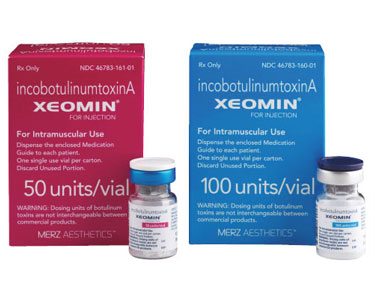
The main differentiating point for Xeomin is that it does not require refrigeration.
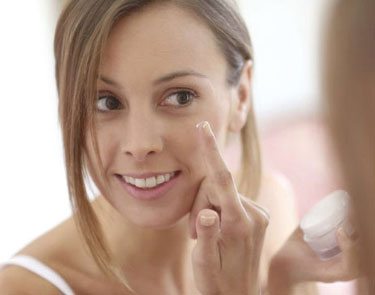
Many physicians and consumers are eagerly awaiting approval of topical botulinum toxins.
More to Come
Although Medicis distributes Dysport in the U.S., it is made in Europe by Ipsen (ipsen.com). Ipsen has announced that it is proceeding with Phase 3 clinical trials on the first-ever ready-to-use liquid toxin A, called Dysport Next Generation (DNG). Clinical trials indicate it will be similar to Dysport in effect and longevity.
Evosyal is produced by Daewoong Pharmaceutical in South Korea. The injectable neurotoxin was approved by the Korean Ministry of Food and Drug Safety in November 2013 and will be marketed in that country under the trade name Nabota. ALPHAEON (alphaeon.com) has exclusive rights to market the neurotoxin in the U.S. ”
This is a botulinum toxin type A, similar to the other neurotoxins that are being used in aesthetic procedures. It has 900kDa protein, which is identical to Botox,” says Christpher Marmo, PhD, CEO of Evolus, which was acquired in 2013 by ALPHAEON. “The biggest benefit we have is a 1:1 dosing equivalent to Botox Cosmetic.”
“It is important to have another option available on the market that is the same molecule size as the market leader right now,” says Robert Grant, CEO of ALPHAEON. “I strongly believe that the market for patients who can afford neurotoxins and/or dermal fillers is only 10% penetrated. Having more options for doctors to minister to those patients is positive for the market, and we are very excited about the potential of this product.” The company is currently working with the FDA to set up clinical trials and hopes to bring Evosyal to market in 2017.
“Most of the products in the injectable neurotoxin aesthetic pipeline don’t seem to offer major advantages over those we already have in terms of predictability or duration for aesthetic procedures,” says Dr. Cohen, “but I am excited about the topical neuromodulator preparations being developed. Physicians don’t really know how significant the needle phobic population may be, but once a topical preparation is available we may find new patient populations and potential new uses of neuromodulators.”
RT001 from Revance Therapeutics (revance.com) is a botulinum toxin type A topical gel that is entering Phase 3 clinical trials. Phase 2 trials showed no significant safety issues. There was no evidence of regional spread of botulinum toxin and no serious adverse events. Revance is also working on RT002, an injectable botulinum toxin type A formulation that uses TransMTS technology to restrict the active molecule to the target site and reduce unwanted spread.
There’s competition here as well. Transdermal Corp. (transdermalcorp.com), based in Birmingham, Michigan is testing Cosmetox, a botulinum toxin type A topical cream delivered with the company’s proprietary nonparticle drug delivery technology.
Both of these products and the rationale behind topical delivery of botulinum toxin is well covered in “Topical Botulinum Toxins” by Ashley Collins, MD, and Adnan Nasir, MD, published in the March 2010 issue of the Journal of Clinical and Aesthetic Dermatology.
As new products enter the market, physicians are finding more ways to use these products both for cosmetic and medical purposes. “We offer extended hours for Botox injections, called Technology Thursday,” says Dr. Narurkar. “We call it this, since San Francisco is a new technology hub. We stay open on Thursdays from 5pm to 7pm to accommodate people after work.” He has been amazed by the turnout of new patients: “We are booked solid for an hour and a half every week with new patients. We are also seeing younger patients and more men. And we still haven’t hit the masses.”
